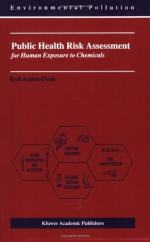|
This section contains 1,377 words (approx. 5 pages at 300 words per page) |

|
Consumer pollution refers, in part, to traces of numerous consumer products, including pain relievers, prescription drugs, antibiotics, insect repellent, sunscreens, and fragrances—collectively called pharmaceuticals and personal care products (PPCPs)—discovered in inland and ocean waters. Between 1999 and 2000 the United States Geological Survey (USGS) established the widespread occurrence in the environment of minute but measurable quantities of PPCPs, along with other organic wastewater contaminants, such as detergent metabolites, plasticizers, and fire retardants. These contaminants were discovered in 80 percent of 139 waterways downstream from sewage treatment plants and livestock operations. Before 1999 most research into PPCPs took place in Europe, and pharmaceuticals were detected there in sewage treatment effluent, surface water, groundwater, drinking water, and the North Sea.
How Ppcps Enter the Environment
Thousands of PPCPs are consumed worldwide, some on a par with agrochemicals, at rates of thousands of tons a year. These substances enter the environment largely...
|
This section contains 1,377 words (approx. 5 pages at 300 words per page) |

|


